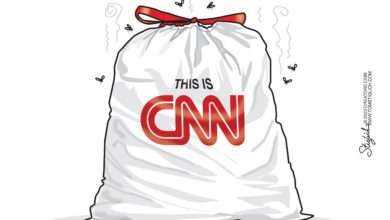Did Trump Discuss Sensitive Information with Russians?
On Monday evening every news outlet imaginable led with the breaking news headline: Trump revealed highly classified information to Russian foreign minister. The news was not immediately confirmable and brought up three important questions: Did he actually reveal sensitive information, was it illegal or damaging, and who leaked the contents of a sensitive meeting to the press?
The original report came from The Washington Post and cites only anonymous sources, yeah, I know, but here is the crux of the article:
The information the president relayed had been provided by a U.S. partner through an intelligence-sharing arrangement considered so sensitive that details have been withheld from allies and tightly restricted even within the U.S. government, officials said.
The partner had not given the United States permission to share the material with Russia, and officials said Trump’s decision to do so endangers cooperation from an ally that has access to the inner workings of the Islamic State. After Trump’s meeting, senior White House officials took steps to contain the damage, placing calls to the CIA and the National Security Agency.
Taking some time to digest the story and actually read the latter paragraphs as one must do with WaPo stories, it’s not quite clear that anything wrong has been done, if anything at all actually happened.
“The president and the foreign minister reviewed common threats from terrorist organizations to include threats to aviation,” said H.R. McMaster, the national security adviser, who participated in the meeting. “At no time were any intelligence sources or methods discussed, and no military operations were disclosed that were not already known publicly.”
But the Post’s anonymous source lays out what it claims is the conversation where Trump shared sensitive information.
Trump went on to discuss aspects of the threat that the United States learned only through the espionage capabilities of a key partner. He did not reveal the specific intelligence-gathering method, but he described how the Islamic State was pursuing elements of a specific plot and how much harm such an attack could cause under varying circumstances. Most alarmingly, officials said, Trump revealed the city in the Islamic State’s territory where the U.S. intelligence partner detected the threat.
The Washington Post is withholding most plot details, including the name of the city, at the urging of officials who warned that revealing them would jeopardize important intelligence capabilities.
Deputy National Security Advisor Dina Powell, who was also in the meeting, said in a statement that the Washington Post story “is false.” She added, “The president only discussed the common threats that both countries faced.”
The Post failed to contact any of the administration officials actually present in the meeting to verify their source’s information. The lack of journalistic integrity puts the credibility of the story in serious question. Those from the White House who attended the meeting were President Trump, Secretary Tillerson, National Security Advisor McMaster, and Dina Powell.
The only crime clearly committed is the leak. Only someone in that meeting could have divulged the conversation to either someone without “the need to know” and/or directly to the press. The FBI should be focused on finding these people and prosecuting them to the full extent of the law.
Trump’s alleged discussion did not break the law. U.S. Presidents have broad authority to legally declassify government secrets.
What we know is that Trump shared something that his National Security Advisor says did not include sources or methods. The largest damage done may have been the leak of the information to the press. Our partners might see the inability of the White House staff to keep their mouths shut as a bigger danger than the president sharing anti-terrorism strategies with Russia.
McMaster is expected to make a public comment on camera Monday evening.




